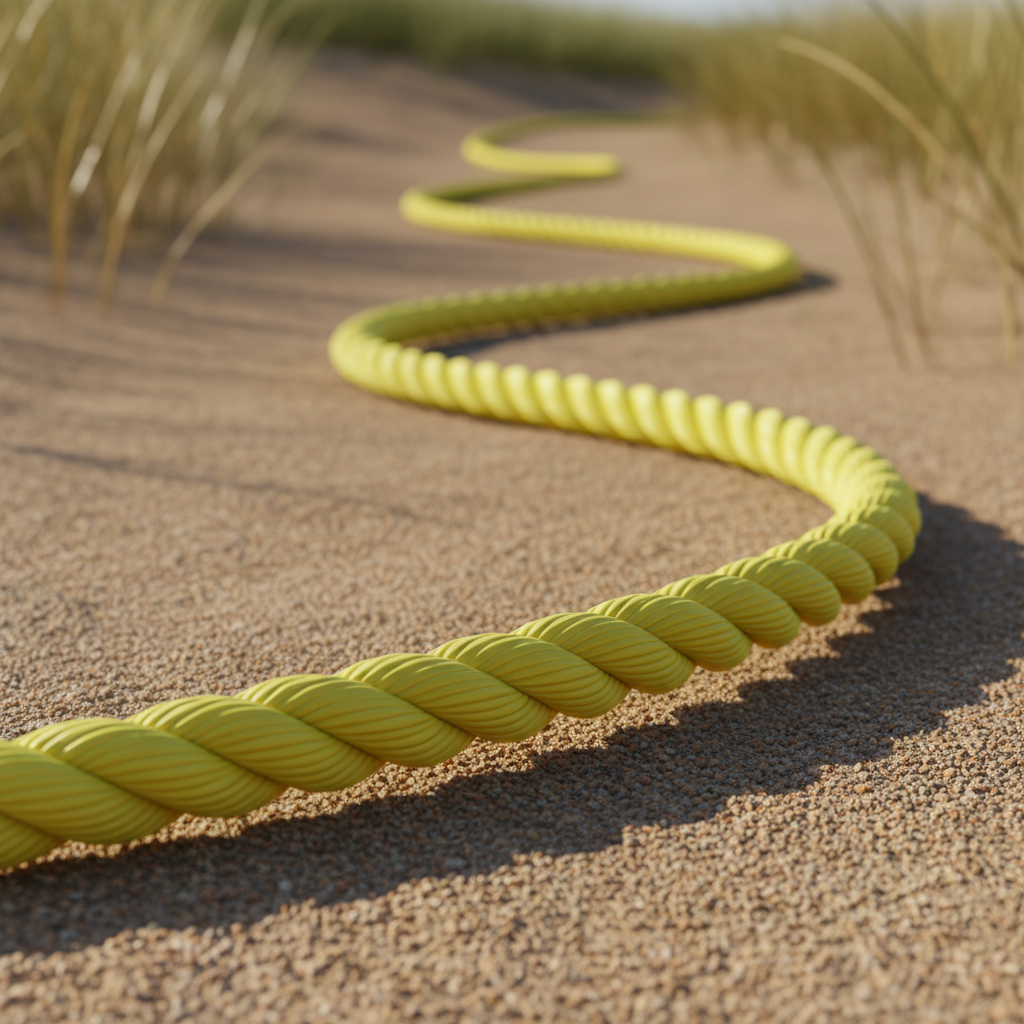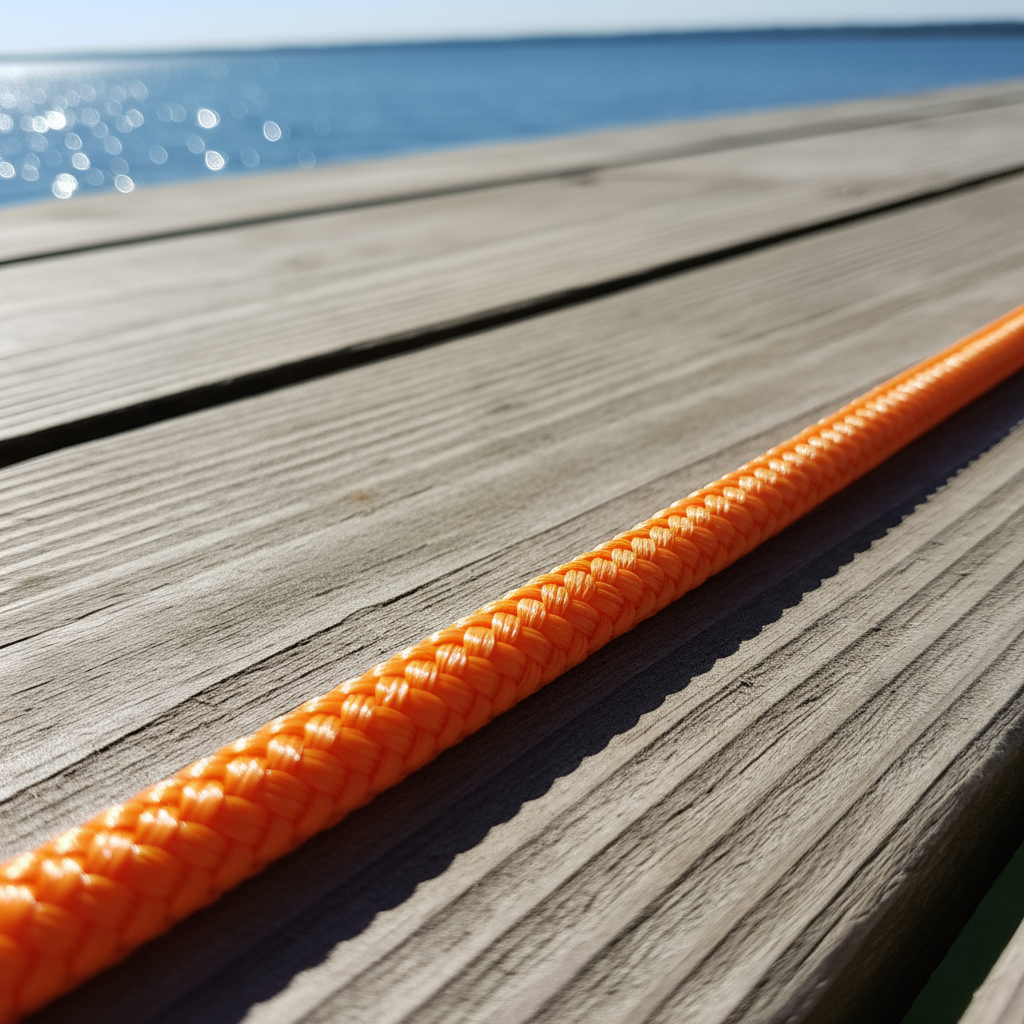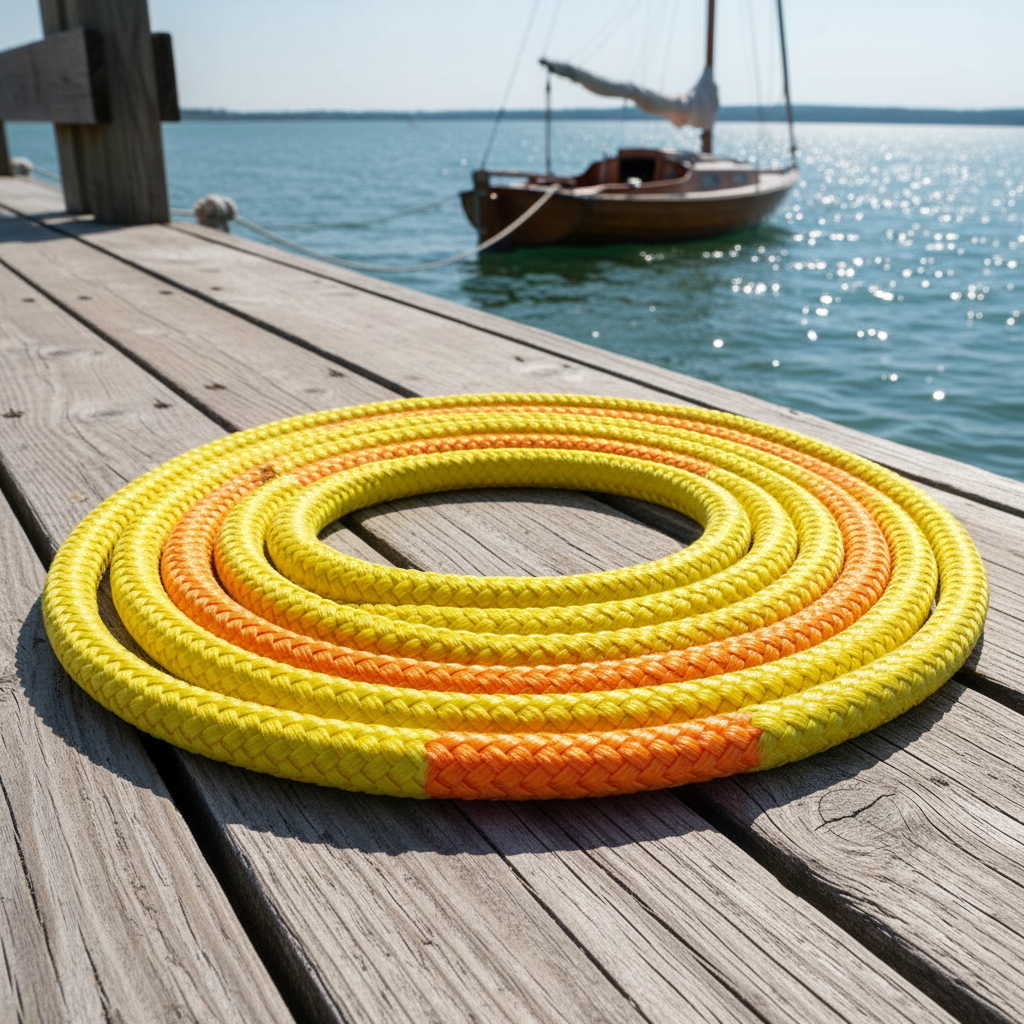Double‑braid polypropylene rope delivers up to 1 800 lb breaking strength in a 3/8″ diameter while weighing only 0.31 lb/ft — the ideal blend of strength and floatability.
What you gain – ~4‑minute read
- ✓ 30 % less stretch than nylon, delivering tighter lift control.
- ✓ 92 % strength retention after a year of UV exposure.
- ✓ Splice in under 2 minutes, slashing install time by ~45 %.
- ✓ Custom colours & branding enhance visibility and brand impact.
Most contractors assume a single‑braid polypropylene line is sufficient for dock‑lines, yet they’re often missing out on a hidden performance boost. Double‑braid construction shares the load across an inner core and an outer sheath, significantly reducing stretch by approximately 5% compared to single-braid options, and effectively doubling abrasion resistance. These advantages, while not always immediately visible, become clear during rigorous pull tests. Discover how this unexpected upgrade can minimise maintenance hours and significantly raise your safety margins.
Braid Polypropylene Rope
Braided ropes are crucial across various industries, offering strength, flexibility, and durability for many applications. Among these, braid polypropylene rope stands out as a versatile choice. It is a favourite among outdoor and industrial professionals, and for good reason.

Essentially, a braid polypropylene rope is crafted from polypropylene fibres interlaced in a braiding pattern, rather than a traditional twist. This braiding technique creates a smooth, uniform surface, allowing it to glide through pulleys with minimal friction. Furthermore, the polypropylene core ensures the rope remains lightweight and buoyant, which is a significant advantage in many applications.
There are primarily two main braid constructions to consider. A solid braid construction features tightly packed fibres, resulting in a smooth, abrasion‑resistant finish. This makes it ideal for applications requiring repetitive handling. Conversely, a hollow braid leaves a small void within the rope. This unique design makes it exceptionally easy to splice and adds to its floatability—a perfect combination for marine or water‑sports uses.
- Smooth handling: The braid’s flat surface helps prevent snagging and allows the rope to glide effortlessly through hardware.
- Durability: Polypropylene inherently resists rot, mildew, and most chemicals, ensuring the rope lasts longer even in harsh environmental conditions.
- Even load distribution: Interlaced fibres share tension uniformly, which reduces stress points and extends the service life of the rope.
These distinct characteristics make braid polypropylene rope highly versatile. For instance, you’ll often find it in off‑road recovery kits, where its light weight allows for carrying extra length without a significant burden. Campers also value it for tarps and gear ties because it doesn’t absorb water and remains buoyant if dropped. In yachting, crews select it for deck-hand lines and sail-trim adjustments, appreciating its blend of strength and floatability. Even in industrial settings, this rope serves as a cost-effective, chemical-resistant tie-down solution for pallets and equipment.
Choosing the right braid style for the specific task—a solid braid for maximum durability or a hollow braid for easy splicing—ensures optimal performance. This inherent flexibility makes braid polypropylene rope an indispensable and adaptable tool across a multitude of sectors, offering practical solutions for diverse needs.
Polypropylene Braid
Having explored the varied ways a rope can be constructed through braiding, let’s now examine the material that makes these constructions so resilient and adaptable: polypropylene fibre. Polypropylene offers a unique set of characteristics, making it particularly well-suited for applications where ropes must be lightweight, resistant to harsh chemicals, and capable of enduring prolonged sun exposure.

So, what are the unique properties of polypropylene rope? At its core, polypropylene fibre is exceptionally lightweight, absorbs almost no moisture, and, when stabilised during manufacture, possesses excellent resistance to ultraviolet (UV) radiation. This low water absorption ensures the rope maintains its strength even after repeated exposure to rain or spray. Such UV protection is crucial, as it prevents the material from becoming brittle or degrading under bright sunlight. Furthermore, polypropylene is an electrical insulator, making it a safer option for use near live electrical wires or in environments where static discharge is a concern.
- Low moisture uptake: The fibre remains dry, ensuring its strength doesn’t diminish in wet conditions.
- UV‑stabilised finish: Colour-fast and designed to resist sun‑induced cracking and degradation.
- Electrical insulation: Provides safety for applications near power lines or sensitive electronic equipment.
These attributes are why manufacturers, such as iRopes, consistently favour polypropylene for braided rope constructions. The material's lightness reduces the overall mass, which is particularly beneficial in applications like yachting, where every kilogram can affect performance, or in off-road recovery where portability is key. Its resistance to oil, gasoline, and most solvents means the rope can be confidently used near engines or fuel tanks without fear of degradation. When polypropylene fibres are intricately interlaced into a braid, the resulting rope capitalises on the material’s inherent low stretch, providing a more predictable pull-load. This is achieved while still offering enough flexibility to run smoothly through various pulley systems.
“When you need a rope that won’t swell, rot or conduct electricity, polypropylene braid is the sensible choice for marine and industrial projects.”
Performance metrics underscore this reputation. A typical 3/8‑inch (10‑mm) polypropylene braid, for example, can achieve a tensile strength of roughly 1 800 lb (approximately 800 kg). This impressive figure gives it a strength‑to‑weight ratio that often surpasses many heavier synthetic fibres. Because the rope stretches only a few percent under load, users experience less ‘give’ during lifting or towing operations, translating into tighter, more precise control. UV‑resistant grades of polypropylene exceptionally retain over 90 % of their original breaking strength after a year of continuous sun exposure. This level of retention is a key factor manufacturers highlight when comparing polypropylene against untreated nylon ropes.
In practical terms, these statistics mean that a contractor can specify a single diameter of polypropylene braid for a dock-line, a tow-rope, or a rigging sling. They can be confident that the rope will remain buoyant in water, resist the oily residues commonly found with marine engines, and maintain high visibility thanks to its UV‑stable colours. The synergistic combination of advanced material science and precise braid geometry makes polypropylene braid a premier solution for wholesale buyers seeking reliable and lightweight options.
Next, we’ll elevate this discussion to the next level of construction: the double braid design. Here, a braided core and a braided sheath work in tandem to push both strength and flexibility even further.
Double Braid Polypropylene Rope
Building upon the intrinsic strengths of polypropylene, the double‑braid design takes performance a significant step further. This advanced construction results in a rope that feels both robust and remarkably supple in hand, ideal for demanding applications.

So, what exactly is a double braid rope? It features a braided core enveloped by a second, independently braided sheath. In this innovative design, the internal core bears the primary load, whilst the outer sheath acts as a crucial protective layer, shielding the core from abrasion, UV exposure, and chemical contact. Because both layers are intricately interwoven, the load is distributed evenly, which translates into a smoother pull and less wear and tear over time. This dual-layer system greatly enhances the rope’s overall durability and longevity.
Key Benefits
A double braid polypropylene rope delivers higher tensile strength compared to a single braid. Its reduced stretch provides tighter control during lifting or towing operations. The exceptional flexibility of this construction minimises kinking and ensures smooth passage through pulleys. Crucially, both the outer sheath and core can be intricately spliced, allowing for secure and permanent terminations without compromising performance.
Construction
How the rope is built
Core
A braided core of multifilament PP fibres forms the backbone, providing superior load-bearing capacity.
Sheath
An outer braided sheath vigorously protects the core, enhancing abrasion resistance and prolonging lifespan.
Load Sharing
Both layers work in seamless unison to distribute tension evenly, effectively minimising stress points and boosting overall resilience.
Applications
Where it shines
Dock Lines
Ideal for marine dock lines and mooring, where high strength and floatability are absolutely critical for safety and performance.
Industrial Lifts
Excellent for handling heavy‑duty lifting and demanding pulling tasks in varied settings, including factories and busy warehouses.
Towing & Rigging
A trusted choice for towing boats and precise rigging of sails, thanks to its minimal stretch and superior spliceability, ensuring reliable handling.
Get a Personalised Rope Recommendation
This article has guided you through the diverse world of braided ropes, from the simpler solid or hollow constructions of a braid polypropylene rope to the more advanced double braid polypropylene rope, which intelligently pairs a load‑bearing core with a protective sheath. By harnessing the lightweight, UV‑stable, and chemical‑resistant characteristics of a polypropylene braid, you can expect smooth handling, even load distribution, and excellent floatability across a wide spectrum of applications, including off‑road, marine rope manufacturers, and industrial tasks.
Whether your needs call for a standard braided rope or a more specialised double‑braid system, iRopes is your strategic partner. We are committed to designing custom solutions that meet your precise specifications, backed by ISO 9001 certification and comprehensive OEM/ODM services. Utilise the form above to receive personalised guidance from our dedicated rope specialists, ensuring you select the ideal rope solution for your unique requirements.
If you'd like expert and tailored advice on the optimal braided rope for your next project, simply complete the enquiry form above, and our team of specialists will promptly assist you.